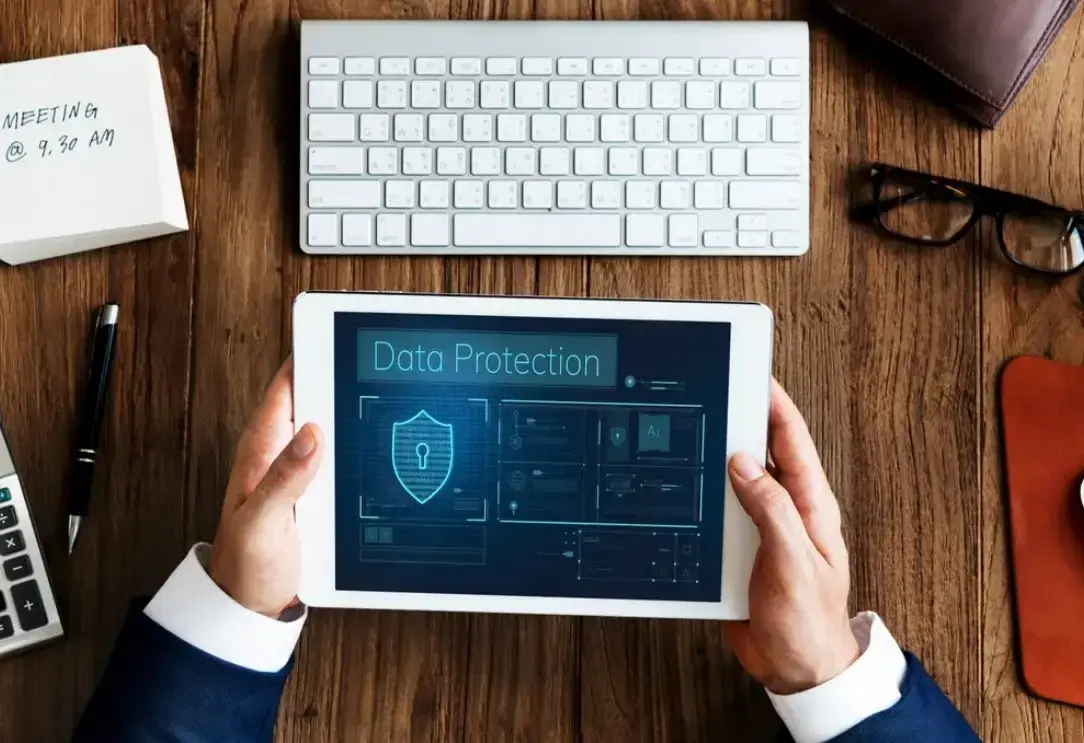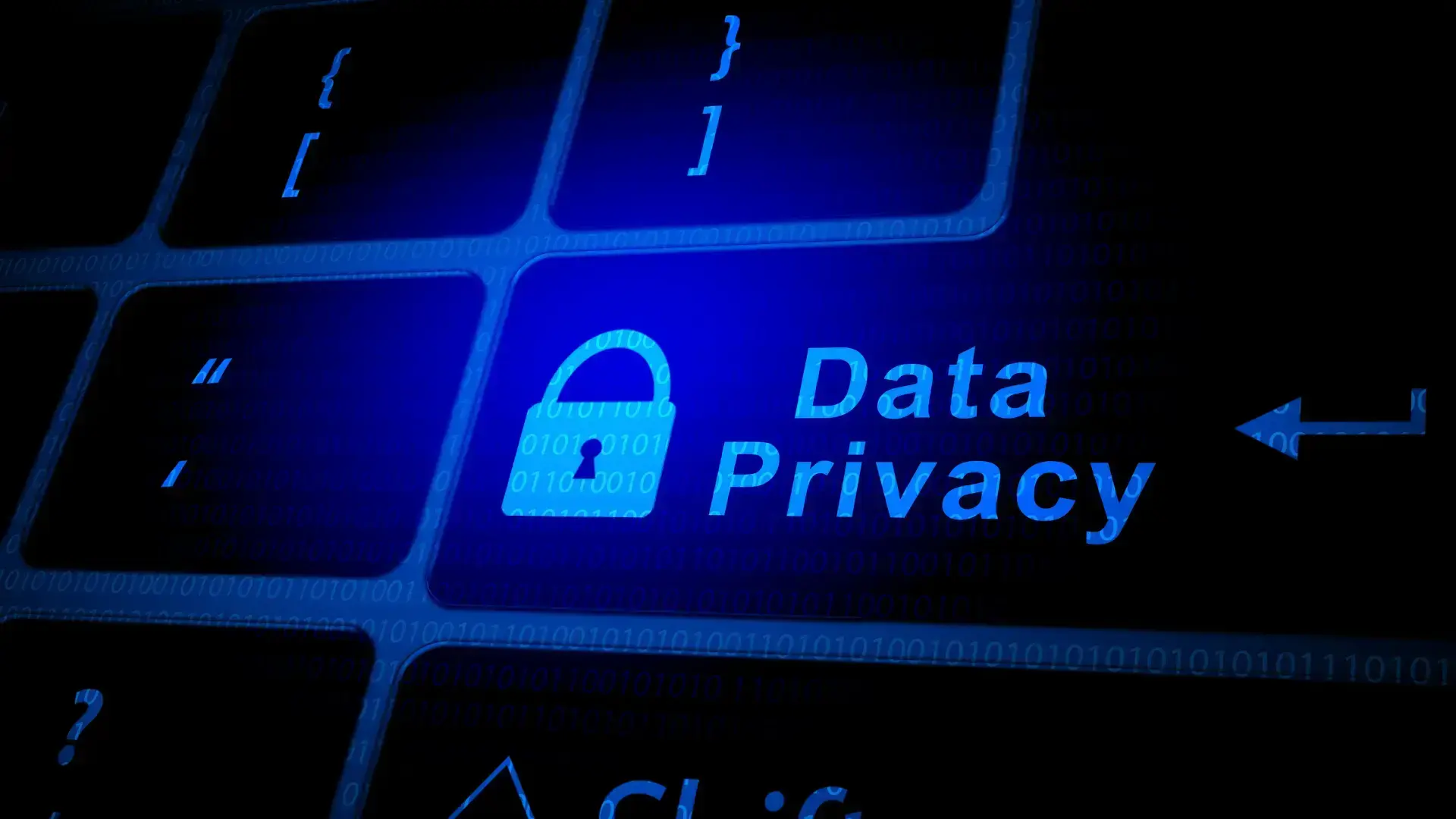As customer interactions move online, robust data security is more critical than ever. Unfortunately, consumer trust in how companies manage data isn't high. Pew Research Center findings indicate that:
81 percent of US adults worry about how companies use their collected data.
Article Table of Contents:
- What are advanced encryption techniques?
- Why use multi-factor authentication (MFA)?
- The Importance of Securing Company Networks
- How To Set Up Continuous Monitoring and Incident Response
Moreover, the COVID-19 pandemic fueled a surge in cybercrime, with Cloudwards reporting a staggering 600 percent increase in attack rates. This led to an estimated $6 trillion in global cybercrime damages by 2021.
Source: Cloudwards
Consumer confidence is falling as worries and data privacy and security incidents rise. Responding to breaches is no longer enough.
As threats grow more sophisticated, securing customer information requires proactive measures.
This article explores how advanced encryption, multi-factor authentication, network security, and continuous monitoring can rebuild customer trust.

Image by rawpixel.com on Freepik
Implementing these robust data protection measures can help establish your company as a reliable steward of personal information in an increasingly digital world.
What are advanced encryption techniques?
Advanced encryption employs sophisticated methods to protect sensitive information from unauthorized access or interception.
They utilize complex algorithms and mathematical formulas to convert data into unique and unreadable code. Only authorized parties possessing the proper decryption key can decode and access the encrypted information.
Even with a solid firewall to block external access, unencrypted data remains vulnerable to cybercriminals if they infiltrate your internal business network.
During transit, attackers may also try to manipulate your business data. Advanced encryption can prevent this and secure your data's integrity. It will keep them accurate and consistent across all digital tools and solutions you use.
Data breaches can be costly and irrevocably damage your reputation. With these advanced encryption techniques, your business can ensure the safety of your customer data and make it accessible only to authorized users.
-
Symmetric encryption
Symmetric encryption utilizes a similar key for encryption and decryption. This process involves encrypting plain text by scrambling it during transit.
Once the message reaches the intended recipient with the key, the algorithm decrypts it back to plain text or original readable form.
This method efficiently encrypts large volumes of data, such as databases.
However, it requires the entities communicating through symmetric encryption to share the key for the decryption process. As the number of connected users increases, so do the required keys.
This need for a single key can be a disadvantage when transmitting data among multiple parties. Symmetric encryption is most suitable for secure data transfer within a close network.
Advanced Encryption Standard (AES) is among the most widely used government and commercial encryption application algorithms.
Use robust encryption algorithms like AES-256 when implementing a symmetric encryption method. Likewise, enforce regular key rotation policies to minimize the risk of key compromise.
-
Asymmetric encryption
Asymmetric encryption employs a pair of keys. There's a public key for encryption and a private key for decryption. That means the sender and recipient use two keys to secure information from outside viewing.
Since only the intended recipient with the private key can decrypt the data transmitted to them, losing the public key does not lead to data compromise.
This makes asymmetric encryption a more practical choice for public internet data sharing. It offers increased security for critical exchanges and digital signatures.
RSA (Rivest-Shamir-Adleman) and ECC (Elliptic Curve Cryptography) are typical examples of asymmetric encryption.
When using these methods, secure private keys in a hardware security module (HSM) to deter unauthorized access. To enhance security, use multi-channel key exchange methods.
-
End-to-end encryption

Image by DC Studio on Freepik
End-to-end encryption (E2EE) enhances security by ensuring that no third party, like service providers or hackers, can access the communication in transit. It does more than send encrypted messages. It also enables you to control who has authorized access to stored data.
Incorporating privileged access management (PAM) into your encryption strategy can further protect sensitive data by ensuring that only authorized users with the appropriate permissions can access encrypted information.
This technique utilizes asymmetric encryption. So, when a sender encrypts a message using a recipient's public key, only the recipient possessing the private key can decrypt the message.
This process guarantees that only the authorized recipient can access the data.
E2EE also safeguards data privacy by blocking intermediaries like service providers and advertisers from accessing and using message content.
It gives individuals and businesses a powerful means to securely share and store sensitive data without compromising privacy.
When using a platform for your business, ensure that it offers end-to-end encryption for communication. Likewise, you must conduct routine audits of encryption protocols to ensure compliance and security.
Why use multi-factor authentication (MFA)?
Multi-factor authentication (MFA) offers an increased layer of security. It requires users to provide two or more forms of identity verification before granting them access to a network, website, or application.
This additional layer of protection helps deter unwanted access to critical programs and data in your business.
-
Types of MFA
After users enter their login credentials, MFA uses three main verification methods. They can be a combination of one or more of the following:
-
- Knowledge factor: The first authentication method relies on something the user knows. It can include usernames, PINs, passwords, and the answer to a security question. Users select a set of predefined questions during the account setup process. They also serve as a method of account recovery, verifying a user's identity if they have forgotten their password.
- Possession factor: The second authentication form involves something the user has. It encompasses physical objects, such as smartphones, smart cards, keys, and token devices that grant users access to a physical location. Digital accounts typically entail a token that generates a one-time password (OTP) through SMS, email, or authenticator apps.
- Inheritance factor: The last type of MFA depends on biometric authentication. It's the most secure authentication method, relying on individuals' unique physical or behavioral traits. The user must possess a smart device or computer capable of biometric scanning. Biometric factors can be fingerprint, voice, or facial recognition.
-
Benefits of MFA
Most online services and accounts provide authentic multi-factor authentication (MFA). Learning the benefits of MFA can help you better understand the importance of incorporating it into your cybersecurity measures.
Its advantages are now integral to modern consumers' expectations for any well-managed organization. Here's what using MFA gives you and your customers:
-
- Reduces risks stemming from human error, forgotten passwords, and misplaced devices
- Increases security as the attacker still needs the other factor to gain access when the password is compromised
- Promptly sends alerts upon detecting suspicious login attempts, enabling companies and individuals to respond swiftly to cyberattacks, thereby minimizing potential damage
- Makes you less vulnerable to phishing attacks since MFA codes are often time-sensitive and not reusable
- Ensures legal compliance as most industry regulations require MFA to secure sensitive information
-
Implementing MFA
While the benefits of using MFA are clear, implementing it can be complex. Setting up and maintaining MFA solutions requires specialized knowledge and expertise.
For starters, follow these practices to maximize the security benefits of MFA and ensure a smooth implementation.
-
- Select the right MFA solution that matches your company's security requirements, infrastructure capabilities, and user preferences.
- Consider a reputable MFA vendor that provides strong features and support.
- Equip users about the importance of using MFA and offer clear instructions on setting up and utilizing the selected MFA solution.
- Before rolling out MFA, establish policies that make sense for your company and the sensitivity of the data your users can access.
- Optimize the MFA enrollment procedure and enable users to manage their authentication factors independently via self-service portals.
- Implement a feedback mechanism with users to address any issues and continuously refine the MFA process.
- Regularly review and update MFA policies and procedures to adapt to security threats and emerging authentication technologies.
The Importance of Securing Company Networks

Image by rawpixel.com on Freepik
Businesses use computer networks to keep important data safe, interact with customers, and conduct day-to-day operations.
Educational institutions can benefit from implementing a comprehensive cyber security solution for education to protect sensitive student data and research information from increasingly sophisticated cyber threats.
This requires a strong need for advanced network security solutions to defend against constantly changing cyber threats.
Whether you run a small or medium-sized business, implementing strategies to protect your company's networks, data, and assets from unauthorized access, attacks, disruptions, or other threats is imperative.
With cybercrime forecasted to reach a staggering $10.5 trillion annually by 2025, it is essential to secure your company's network with more proactive strategies.
Below are some methods to ensure more advanced network security.
-
Using VPNs for secure remote access
Remote access has become a fundamental aspect of modern work environments. Securing remote access is crucial to safeguard sensitive data and uphold network integrity.
A secure virtual private network (VPN), such as AstrillVPN, provides a reliable means of remotely connecting users and devices to a corporate network.
VPNs utilize encryption to establish a secure connection across unsecured Internet infrastructure.
For companies utilizing Windows operating systems, deploying a Windows VPN solution can provide employees with a smooth and secure remote access experience.
It encrypts device traffic in the tunnel, enabling offsite employees to access the corporate network via the virtual network.
However, only use a reliable VPN with strong encryption and privacy features. It is also crucial to train employees on the significance and utilization of VPNs.
Most importantly, you must consistently update the VPN software to mitigate vulnerabilities.
-
Regular software updates and patch management
Regular software updates and patches are integral to optimizing network performance and security. Ensure all software and systems are current with the latest security patches.
Software providers issue updates, called "patches" or "service packs," to address various issues within their programs.
If automatic options are accessible, the Cybersecurity and Infrastructure Security Agency (CISA) advises to take advantage of them.
Suppose automatic software updates are not available. Regularly monitor your vendor's websites for updates.
Educate employees about the importance of installing updates promptly and securely. They must only opt for automatic updates from trusted network locations such as home or work.
Automated patch management tools like WSUS or Patch My PC are also good.
-
Network segmentation
Network segmentation is an essential component of securing your company's network. It involves separating different parts of a computer network or network zones with devices like firewalls, routers, and switches.
Dividing the network into segments can help mitigate the spread of potential breaches.
If your business has proper network segmentation, the threat actor will face an additional barrier when attempting to infiltrate the network.
Consider utilizing Virtual Local Area Networks (VLANs) to segment network traffic for increased security and performance.
Enforce strict access controls to manage segment interactions. For instance, those with access to customer data may be subject to more stringent controls than front-office staff.
How To Set Up Continuous Monitoring and Incident Response
The need for robust security measures has never been greater as businesses increasingly rely on technology to run daily operations.
Unsurprisingly, Gartner reveals that global security and risk management spending is forecasted to increase, reaching $215 billion in 2024.
This demonstrates the growing importance of strengthening cybersecurity measures.
Establishing continuous monitoring and incident response is one of the most crucial elements of these security strategies. It helps companies detect, mitigate, and respond swiftly to security incidents.
-
Setting up continuous monitoring

Image by rawpixel.com on Freepik
Continuous monitoring is critical for keeping your company data and customer information safe.
It involves creating a system that continuously monitors IT systems and sensitive networks to detect unauthorized access or security issues.
Doing so helps your business comply with industry regulations and standards because it also checks for rule violations or performance glitches.
Continuous monitoring has an enormous scope as it anticipates and prevents issues before they occur.
However, its primary domains include infrastructure, application, and network monitoring. Below are some essential steps to begin the continuous monitoring process:
-
- Determine which of your systems should be subject to continuous monitoring.
- Strengthen your measures with Security Information and Event Management (SIEM) tools such as Splunk or IBM QRadar for thorough tracking and analysis.
- Develop clear policies and procedures to guide continuous monitoring activities.
- Establish a dedicated SOC team to handle and respond to security incidents.
- Incorporate your continuous monitoring strategy into current systems and processes to ensure smooth operation and successful implementation.
-
Incident response planning
Cybersecurity attacks have increased, evolving into more destructive and disruptive forms. While proactively securing your infrastructure is crucial, even the most advanced cybersecurity measures can fail against unrelenting attacks.
Therefore, every cybersecurity strategy must include a robust endpoint detection and incident response plan to effectively counter persistent threats.
Without it, your business may not be able to contain, clean up, and prevent threats when they are detected.
Incident response planning outlines how to minimize the duration and damage of security incidents. Consider the following when developing an incident response:
- Which threats, exploits, and situations qualify as actionable security incidents, and how to respond when they occur?
- Who is responsible for specific tasks during a security incident, and how can others contact them?
- Which team members should perform certain tasks under specific circumstances, and how should they be accomplished?
Remember, an incident response plan must guide respondents from the initial detection and assessment to containment and resolution.
Establish an incident response team with well-defined roles and responsibilities and conduct drills to test the response plan's effectiveness.
-
Post-incident review
While stopping a cybersecurity incident is unlikely, you can improve your security to prevent another breach. You must learn from past mistakes and use them to enhance procedures.
This essential aspect of incident management is commonly called post-incident review (PIR). PIR is a comprehensive process of evaluating a cyberattack after it occurs to understand its causes, effects, and response.
It helps uncover system vulnerabilities, prevent repeat incidents, and reduce future incident resolution time. Below are some best practices for completing a PIR:
- Conduct an in-depth root cause analysis to identify vulnerabilities.
- Utilize feedback from incident reviews to enhance cybersecurity measures.
- Establish a communication strategy to keep stakeholders informed during and after security incidents.
Prioritize Data Protection for Customer Trust and Success
As online interactions between individuals and companies increase, the volume of collectible data has grown rapidly.
Consequently, consumers expect you to handle their data responsibly. If you value their privacy and prioritize their security online, you're likelier to attract and retain customers.
By ensuring data protection, you can establish customer trust, a crucial factor in building strong and long-lasting relationships.
Securing your customer information with advanced encryption, MFA, and continuous monitoring can help demonstrate your commitment to privacy and digital security.
Author Bio
Shanice Jones is a techy nerd and copywriter from Chicago. For the last five years, she has helped over 20 startups building B2C and B2B content strategies that have allowed them to scale their business and help users around the world.




